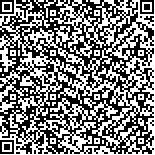本文已被:浏览 527次 下载 444次
Received:July 15, 2020 Published Online:April 20, 2021
Received:July 15, 2020 Published Online:April 20, 2021
中文摘要: 目的 比较微波消融与射频消融治疗慢性肾脏病(CKD)合并继发性甲状腺功能亢进(SHPT)的疗效及安全性差异。方法 选取2017年3月至2018年3月收治的CKD合并SHPT患者60例,采用随机数字表法随机分为射频组和微波组,各30例。射频组进行高频超声引导下射频消融治疗,微波组进行高频超声引导下微波消融治疗。比较两组患者单个病灶消融时间、手术用时、病灶总完全消融率、消融区完全吸收情况、术后并发症发生情况及术后不同时间(消融前、消融后10 min、1 d、1周、1个月、6个月及1年)血清甲状旁腺素(PTH)、钙(Ca)、磷(P)水平变化情况。结果 射频组单个病灶消融时间和手术时间均明显长于微波组(t=6.923、5.040,P均<0.01)。射频组中病灶直径≥15 mm的完全消融率稍低于微波组,但差异无统计学意义(P>0.05),两组病灶总完全消融率比较差异亦无统计学意义(P>0.05)。患者血清PTH、Ca、P水平组间比较无统计学差异(P均>0.05),时点间比较差异均有统计学意义(F时间=407.847、93.254、104.362,P均<0.01),组间与时间无交互作用(P均>0.05)。射频组患者消融区完全吸收率(61.11%)显著高于微波组(41.18%,χ2=5.563,P=0.018)。射频组患者术后并发症总发生率稍低于微波组,但差异无统计学意义(10.00% vs 20.00%,χ2=1.176,P=0.278)。结论 高频超声引导下微波消融与射频消融治疗CKD合并SHPT均具有显著疗效,且安全性较高,其中微波消融更适合较大病灶的治疗。
Abstract:Objective To compare the efficacy and safety of microwave ablation and radiofrequency ablation in the treatment of chronic kidney disease(CKD) with secondary hyperthyroidism (SHPT).
Methods Sixty patients with CKD complicated with SHPT treated from March 2017 to March 2018 were selected and randomly divided into radiofrequency ablation (RF) group and microwave ablation (MW) group (n=30,each).High-frequency ultrasound-guided radiofrequency ablation was performed in RF group,and high-frequency ultrasound-guided microwave ablation was conducted in MW group.The ablation time,operation time,complete ablation rate,absorption in ablation area,postoperative complications and changes in serum parathyroid hormone (PTH),calcium (Ca),phosphorus (P) levels at different times (before ablation,10 min,1 day,1 week,1 month,6 months and 1 year after ablation)were compared between two groups.
Results The ablation time for a single lesion and operation time in RF group were significantly longer than those in MW group (t=6.923,5.040,all P<0.01).There was no significant difference in the complete ablation rate between two groups (P>0.05),even though the complete ablation rate for the lesions ≥ 15 mm in RF group was slightly lower than that in MW group (P>0.05).There were no significant differences in serum PTH,Ca and P levels between two groups (all P>0.05),
and the differences between time points were all statistically significant(Ftime=407.847,93.254,104.362,all P<0.01),but no interaction between groups and time points were found(all P>0.05).The complete absorption rate of ablation area in RF group was significantly higher than that in MW group (61.11% vs 41.18%,χ2=5.563,P=0.018).The total incidence of postoperative complications in RF group was slightly lower than that in MW group,
but the difference was not statistically significant(10.00% vs 20.00%,χ2=1.176,P=0.278).
Conclusion Both high-frequency ultrasound-guided microwave ablation and radiofrequency ablation have obvious efficacy and high safety in treating CKD complicated with SHPT,and microwave ablation is more suitable for the treatment of larger lesions.
keywords: Chronic kidney disease Secondary hyperthyroidism Radiofrequency ablation Microwave ablation Ultrasound guidance Safety
文章编号: 中图分类号: 文献标志码:B
基金项目:湖北省卫生计生委科研面上项目(WJ2017M259)
引用文本:
